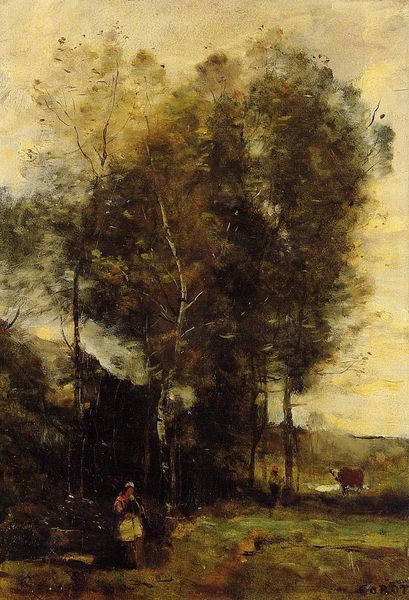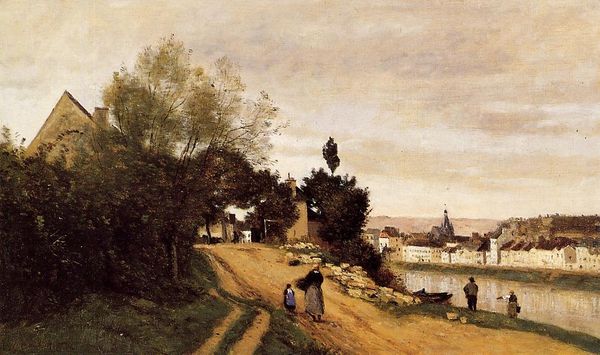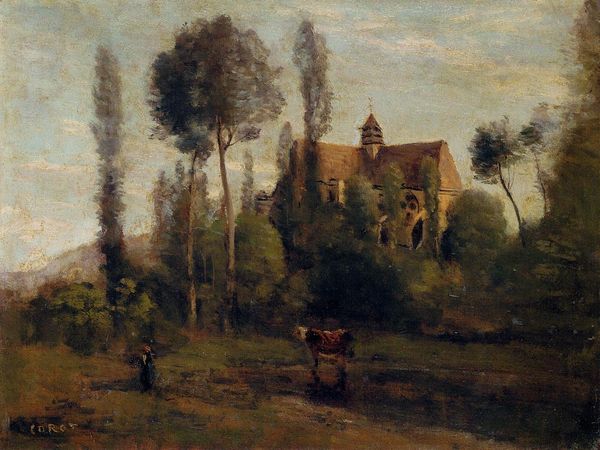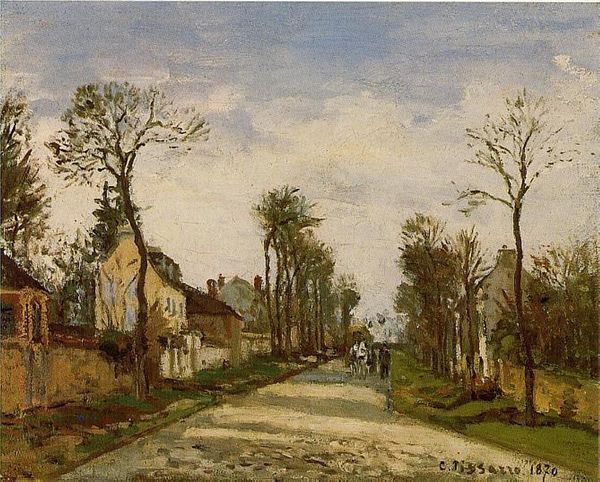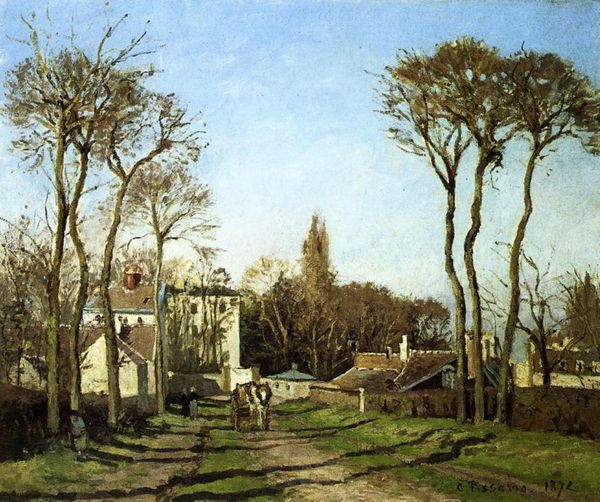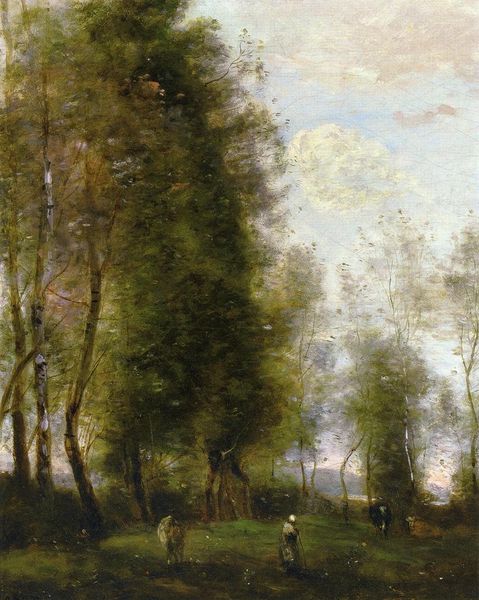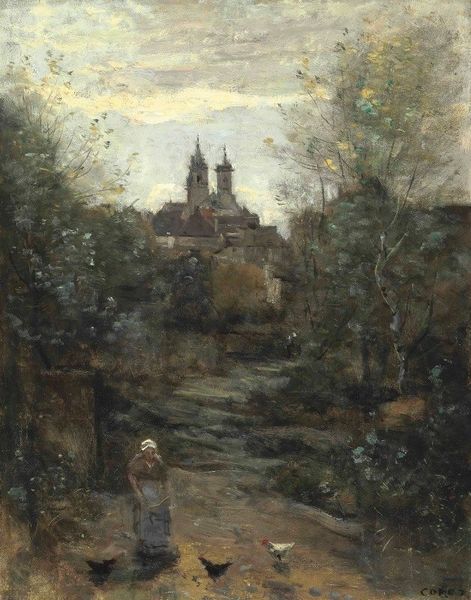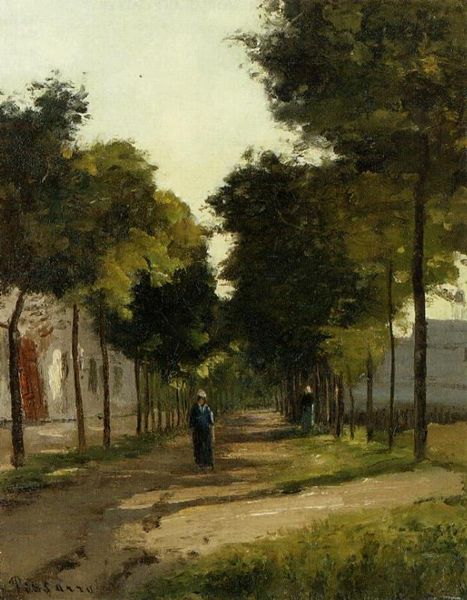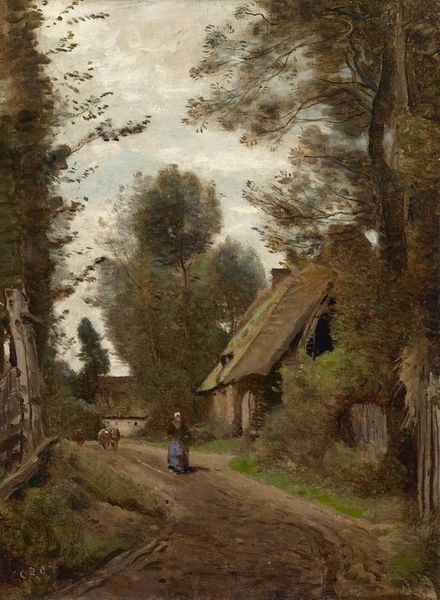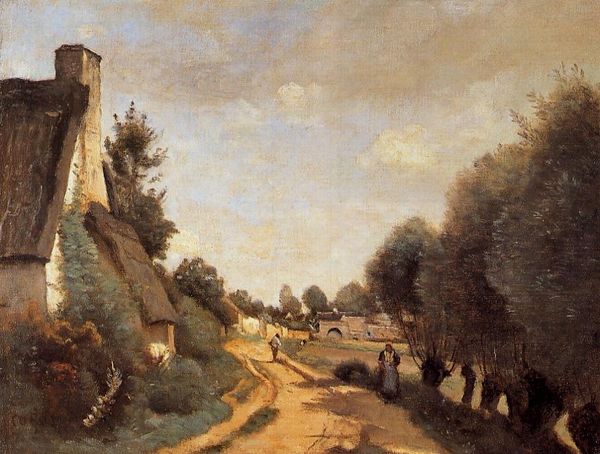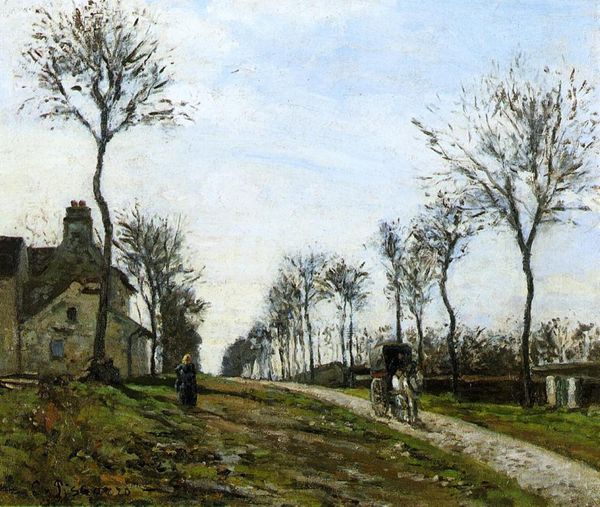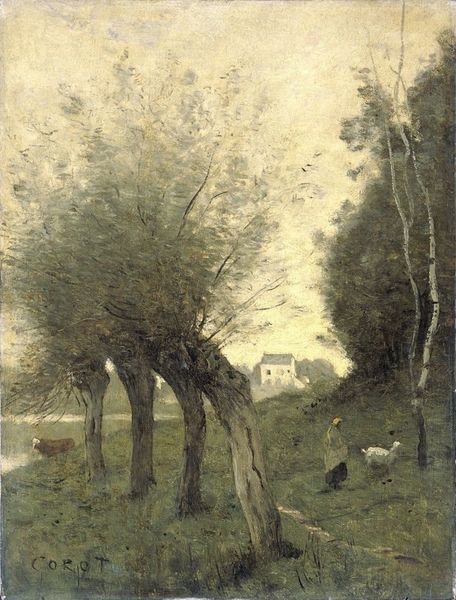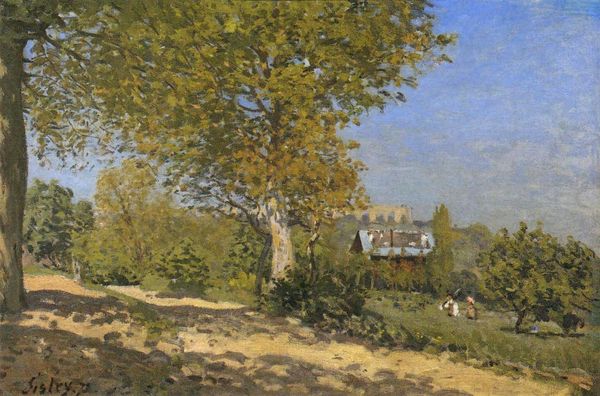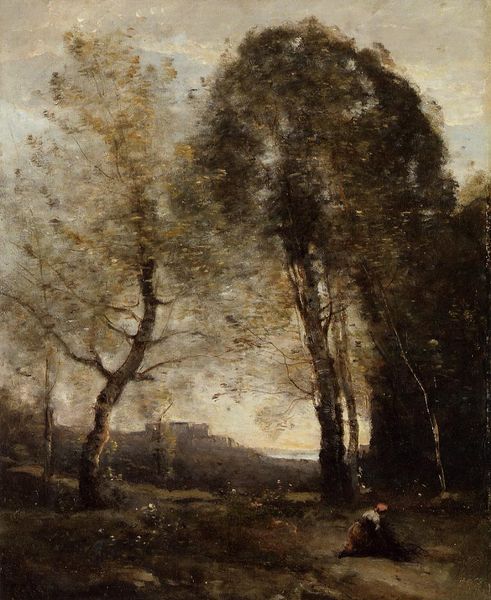
painting, plein-air, oil-paint
#
tree
#
painting
#
impressionism
#
impressionist painting style
#
plein-air
#
oil-paint
#
vehicle
#
landscape
#
impressionist landscape
#
oil painting
#
road
#
genre-painting
Copyright: Public domain
Curator: Jean-Baptiste-Camille Corot created this painting, "Marissal, Path to the Front of the Church," in 1866. It's an oil on canvas, typical of his landscape work, currently held in a private collection. Editor: It has a beautiful ethereal quality; the colours feel almost dreamlike. The vertical composition guides the eye down the path towards that striking church spire. There’s a calming serenity to it. Curator: Corot was a pivotal figure in the development of Impressionism, and this piece exemplifies that transition. He moved away from precise academic renderings to capture the fleeting effects of light and atmosphere using plein-air techniques. Editor: Absolutely, and considering the sociopolitical context, this shift represented more than just a change in artistic style. It was a move toward prioritizing subjective experience over objective representation, reflecting the increasing fragmentation of societal certainties at the time. Notice the positioning of ordinary figures in the lane—are they entering or leaving a spiritual safe space in uncertain times? Curator: That's insightful. The church clearly dominates the composition but these ordinary figures really bring the entire piece to life! It also captures the growing secularism of 19th-century French society. Churches played an increasingly contested role in public life during this time, something artists were subtly reflecting in their work. Editor: The road seems to lead the viewer's eye right to it, perhaps commenting on the paths we carve, the direction we should each take? Perhaps that figure heading away from us represents something of that growing uncertainty? It makes me consider where and why our safe spaces have to evolve and change shape? The materiality seems especially important: the use of subtle, muted colours, the blending of brushstrokes, adds a layer of contemplative haze. Curator: Indeed, the softness blurs boundaries. But looking at his technique within its historical setting is vital too; his looser style gave rise to modern painting. Corot’s innovations went far beyond aesthetics: He helped redefine art's very purpose within society! Editor: Looking closely at "Marissal, Path to the Front of the Church", reminds us how landscapes, in their perceived neutrality, subtly embody seismic cultural shifts of identity and belief. Curator: Exactly. Understanding those connections really elevates our appreciation for both the artist and this remarkable piece.
Comments
No comments
Be the first to comment and join the conversation on the ultimate creative platform.
